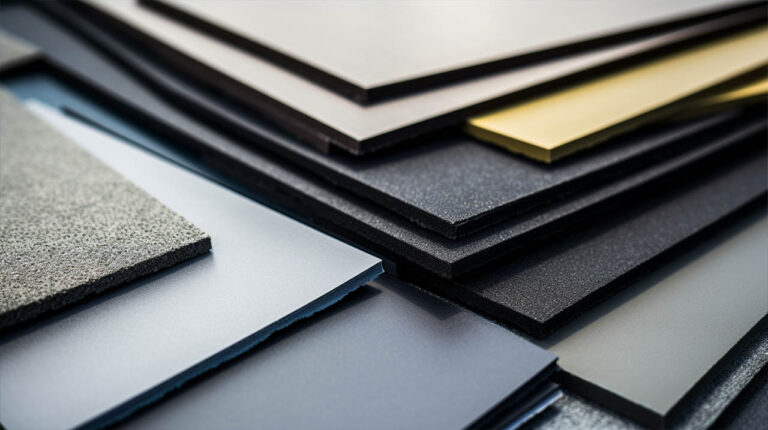Flat roofs, while unique in design, require special attention when it comes to selecting the right materials. The choice of material can significantly impact the longevity, durability, and overall performance of the roof. At TecHero Roofing, we understand the importance of making informed decisions. Here’s a detailed guide to help you understand the various flat roof material types available in the market.
Built-Up Roofing (BUR)
Built-Up Roofing, commonly referred to as BUR, is a traditional choice for flat roofs. It’s designed to withstand the challenges posed by flat surfaces, something that regular asphalt shingles might struggle with.
- Composition: BUR consists of multiple layers. Typically, several layers of felt impregnated with asphalt are embedded in bitumen.
- Application: The felt is spread across the roof, followed by the application of hot asphalt. This multi-layered approach ensures a robust and watertight surface.
- Protection: The topmost layer is often covered with finely crushed stone granules, shielding the felt from harmful UV rays and maintaining its overall condition.
Modified Bitumen Roofing
Emerging as an advanced version of BUR, Modified Bitumen Roofing was introduced in the 1960s. It incorporates polymer-reinforced roof layers, adding an extra layer of strength.
- Flexibility: The inclusion of polymer offers enhanced elasticity, allowing the roof to adapt to temperature fluctuations without compromising its integrity.
- Installation: Roofers might apply Modified Bitumen using torches or opt for self-adhering sheets, depending on the specific polymer in use.
Single Layer Membrane Roof
Representing the latest in roofing technology, Single Layer Membrane Roofing is a favorite for modern structures, especially commercial establishments.
- Material Varieties: This roofing type is available in materials like EPDM (rubber roofing), PVC, Neoprene, among others. EPDM stands out as a popular choice.
- Thickness and Elasticity: These roofs can be as thin as 0.030 inches. Being rubber-based, they exhibit superior elasticity, making them resilient to temperature changes.
- Attachment Methods: Depending on the material, roofs might be attached using adhesives (like for EPDM and Neoprene) or sealed using heat or solvents (as in the case of PVC).
Metal Roofing
Metal roofing, suitable for both residential and commercial properties, offers versatility in design and functionality.
- Metal Varieties: Options include zinc, copper, and aluminum, each bringing its unique set of advantages.
- Aesthetic Appeal: While some metal roofs prioritize utility, there are designs mimicking shingles, adding to the visual appeal.
- Durability: Installed in large sheets and secured with screws, metal roofs promise a lifespan of up to 70 years, making them a long-term investment.
Green Roofing
Green roofing, characterized by a layer of vegetation, is gaining traction for its aesthetic and ecological benefits.
- Eco-friendly: Green roofs provide habitats for various species and have an insulating effect, reducing HVAC costs and promoting energy efficiency.
- Water Absorption: These roofs can absorb water, mitigating flooding risks.
- Maintenance: While offering numerous advantages, green roofs demand regular upkeep to maintain their condition.
Making the Right Choice with TecHero Roofing
The selection of a flat roof material hinges on various factors, including ecological concerns, budget constraints, and specific requirements. At TecHero Roofing, we recommend consulting with a professional roofing service in Simi Valley to guide you through the options. With our expertise in roof repair in Simi Valley and as one of the leading roofing companies in Simi Valley, we’re here to assist you in making the best choice for your building.


